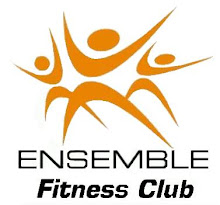The benefits of drinking milk has been the topic of discussion for a very long time and it appears there are the pluses and minuses to consider.
I grew up drinking, not just whole milk, but whole milk that I would often doctor up with PDQ flavored sugar beads (loved the eggnog flavor) and Nestle's Quick (chocolate and strawberry). Here's where the controversy could get started. Is milk a healthy, nutritious drink that can aid fat loss or is it akin to sugary soft drinks that will increase the chances of obesity?
Milk as nutrition: Milk is a good source of protein, carbohydrates, calcium, r
iboflavin, p
hosphorous,
pantothenic acid, v
itamins A, D, and B12. It can also be a large source of saturated fat depending on the % fat of the milk.
Milk as an agent of obesity: Well, if you
drink it like I used to, you can see where that might be true. The fact is that if you are over-
caloried with anything, you will gain weight. Milk is no exception. Another thing to keep in mind is the various % fat of milks. Approximate values are below. Note that the only real differences are fat content and calories:
1 cup nonfat (skim) milk = calories-
80, carbohydrate- 12g, protein- 8g, fat-
0g, calcium- 300mg
1 cup 1% (low-fat) milk = calories- 102, carbohydrate- 12g, protein- 8g, fat- 2g, calcium- 300mg
1 cup 1.5% (low-fat) milk = calories- 118, carbohydrate- 12g, protein- 8g, fat- 3.8g, calcium- 300mg
1 cup 2% (low-fat) milk = calories- 122, carbohydrate- 12g, protein- 8g, fat- 5g, calcium- 300mg
1 cup whole milk = calories-
146, carbohydrate- 13g, protein- 8g, fat-
8g, calcium- 300mg
Milk as a weight loss tool: Research shows that a high calcium diet (one that meets the recommendations) aids fat loss. Even greater fat loss occurs when calcium is achieved through dairy sources.
*
According to the National Academy of Sciences, recommended intake levels of calcium are:
1,000 milligrams/day for those age 19 to 50
1,200 milligrams/day for those age 50 or over
1,000 milligrams/day for pregnant or lactating adult women
Milk as a sports drink: Because of its high nutritional content, low fat milk is a great post activity/recovery drink. Often times, to increase carbohydrates and the d
esire to consume it, low fat chocolate milk is recommended for those not concerned with weight loss.
*
Lactose Intolerance: The inability to break down lactose (milk sugar). According to the
Mayo Clinic resulting
gastro-intestinal discomfort is usually mild. There are reduced lactose dairy products that can be consumed as an alternative.
Hormones: Without getting into a big discussion, with all of the concerns about hormone use in milk pro
duction, the preference would be to choose milk products that are hormone free.
So what's the scoop? For me, I believe that low fat milk is one of those beautiful power foods that more people should enjoy. Low fat, hormone free, for lactose tolerant... Milk, it
DOES a body good!
I'd love to hear your feedback and/or answer any of your questions.
Best wishes, Mark
Mark Nutting,
CSCS*D,
NSCA-
CPT-AR*D
NSCA 2009 Personal Trainer of the Year
Connect with Mark on
Facebook and
Twitter










